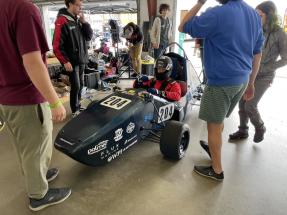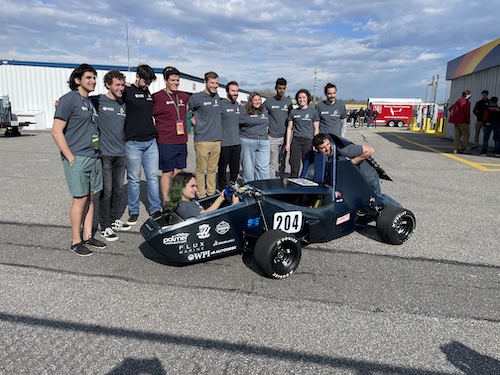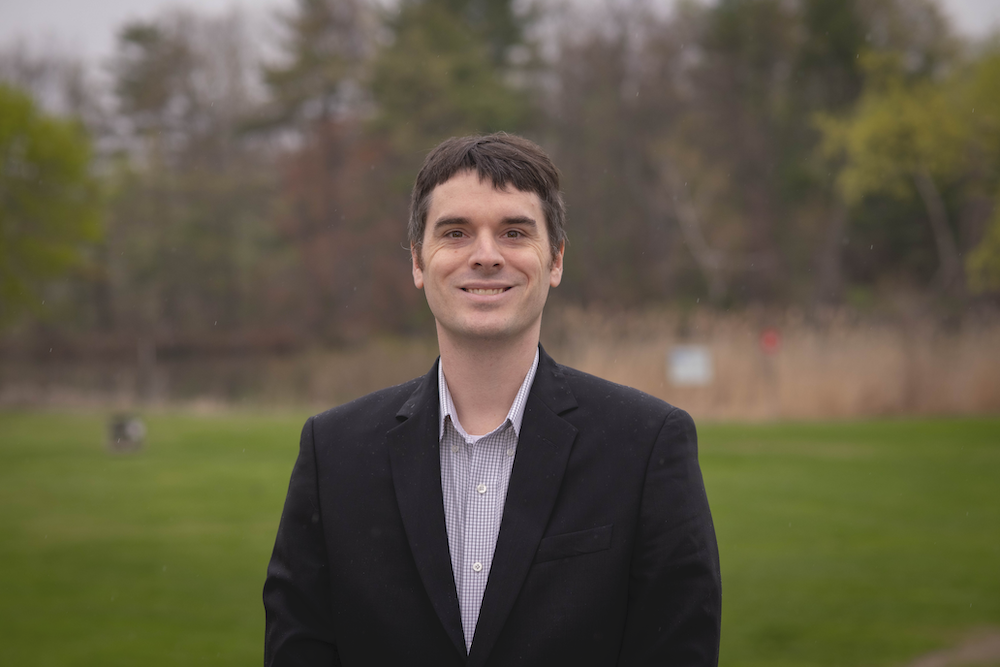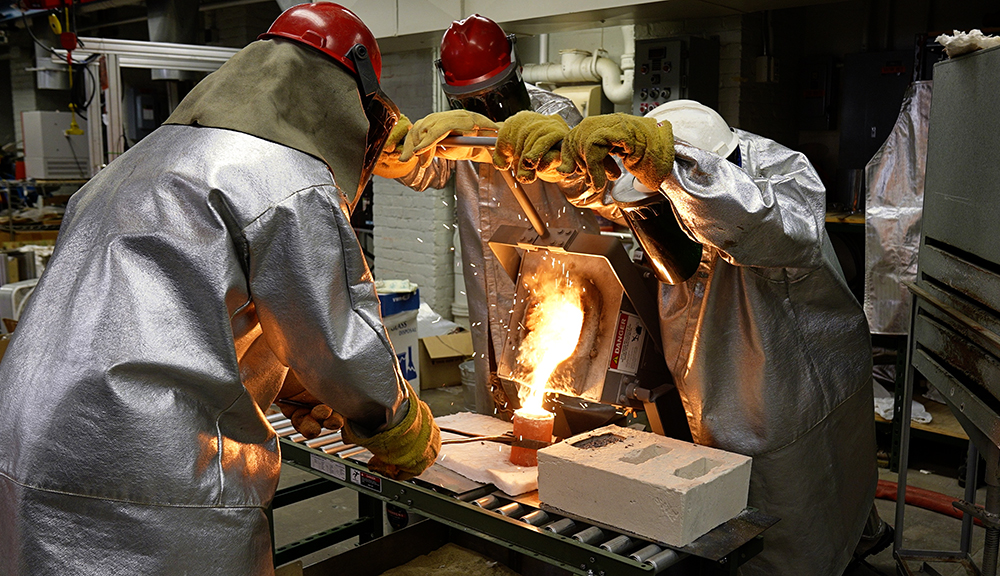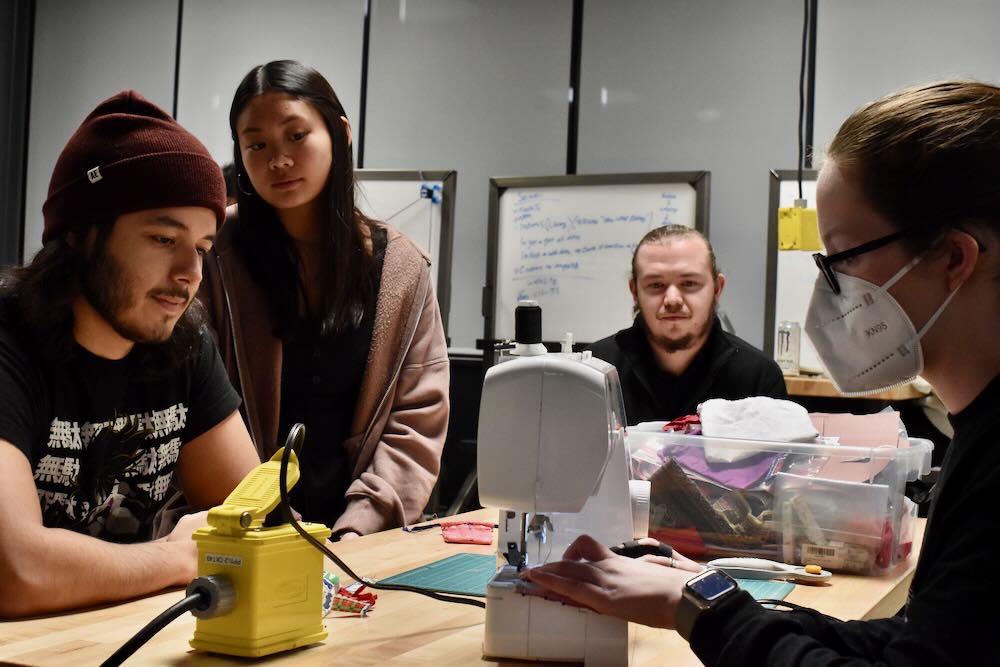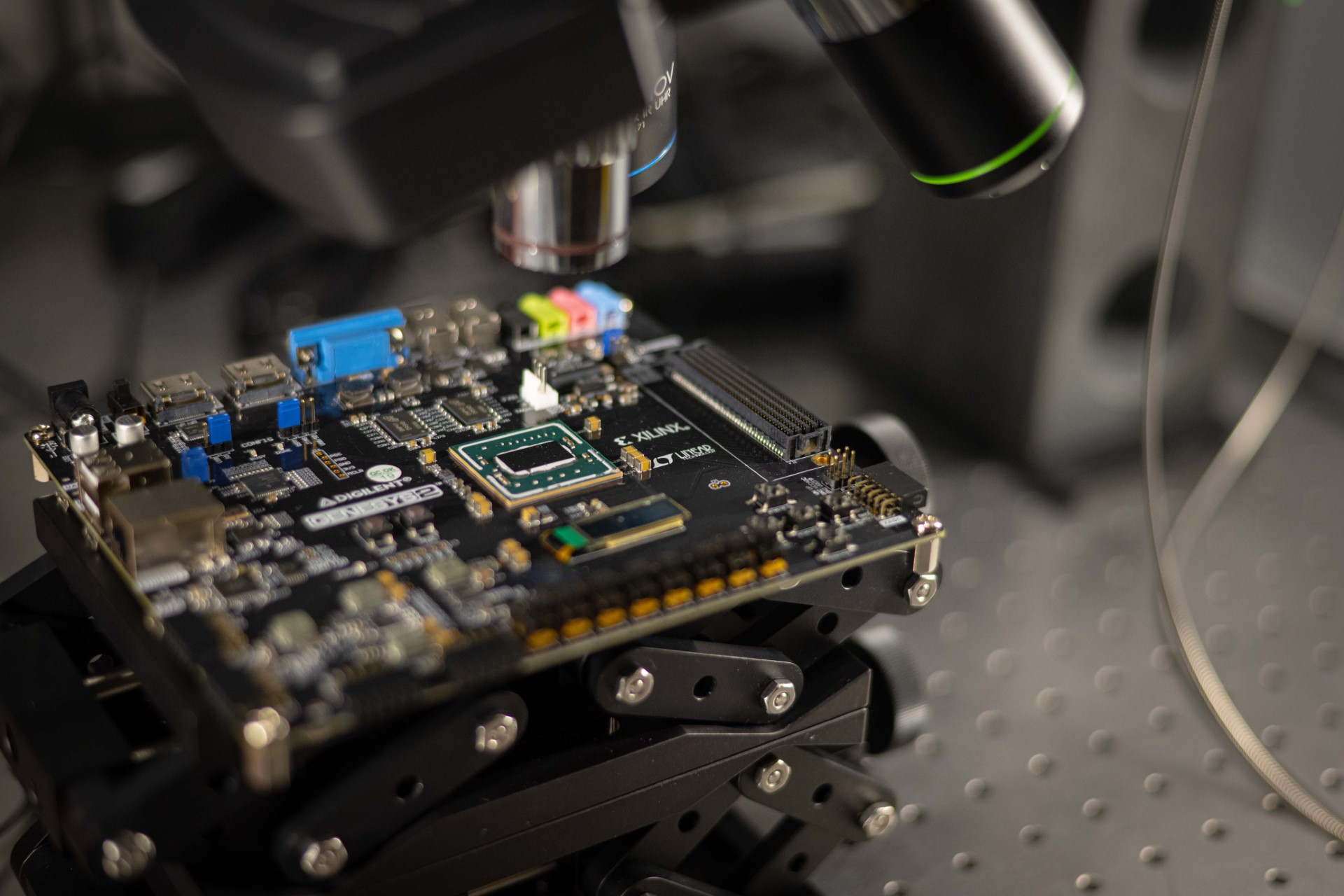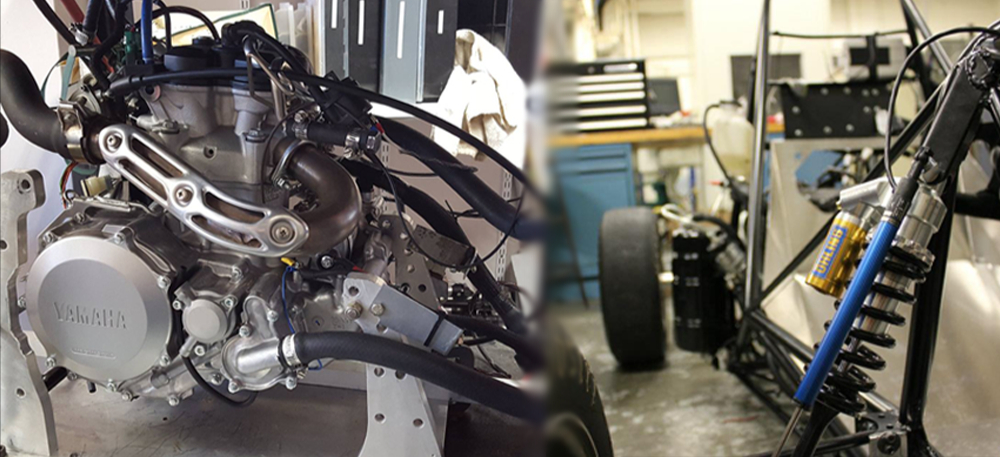Almost hidden away in the back of WPI’s Sagamore facility, the Formula SAE Club’s headquarters has the look and feel of a true motor sports operation. That’s because it is.
Every year, the club’s offshoot Major Qualifying Project (MQP) group takes on the monumental task of building a race car to compete in the annual Formula Hybrid + Electric intercollegiate competition at New Hampshire Motor Speedway in Loudon, N.H. Along the way, club members gain valuable hands-on skills doing everything from fabrication and welding to circuit board design and embedded computer programming.
This year’s team finished just outside the top 10 against the 22 other colleges and universities competing in the electric vehicle category, and brought home the Institute of Electrical and Electronics Engineers (IEEE) Excellence in EV Engineering Award, given annually to the team that emphasizes preparation, team dynamics, attention to details, and establishing or continuing a legacy.
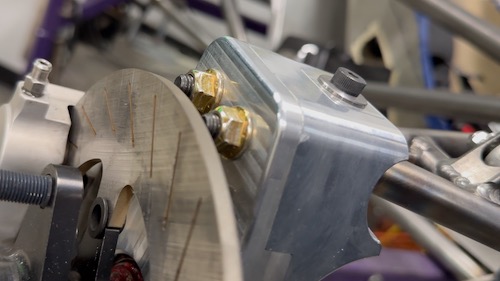
“I think that this year’s car was one of the best-designed FSAE cars we’ve built to date,” said faculty advisor Bill Michalson, professor of robotics engineering. “The craftsmanship, design, and analysis that went into this year’s car was truly outstanding.” With support from various subgroups in the club, the MQP team took a bare tube-frame chassis and developed nearly every system on the electric-powered race machine from the ground up. From the battery to the brake rotors, much of the work was done in-house, on state-of-the-art machining equipment in Washburn or with a welding torch in the Sagamore shop.
The completed car was then loaded into a trailer and hauled to the competition, where over the course of three days in late April the team competed in several events, including an autocross course and an endurance challenge. Active since 1985, WPI’s FSAE team has also made the trek to Michigan for the FSAE national competition. But in recent years, the team has focused its efforts on Formula Hybrid + Electric.
“We switched to electric for a few reasons,” said Harris Brancazio, a senior and member of the MQP team. “But one of the main reasons was that sustainable transportation is really important, and it’s something we think students should be learning about at WPI.”
In addition to making the move from internal combustion engines to fully electric power, the club has also adjusted its structure to ensure that the institutional knowledge gained through the MQP race car building experience does not leave with graduating seniors. Club members not on the MQP can complete various projects and tasks that support the race team in some way, and they earn independent study class credit along the way. One subgroup worked on the steering wheel design for the car this year; another fabricated a tool to move the car around in the pits at the track.
“Next year those students will be on the MQP team, and will have all of that knowledge,” Brancazio said. “Plus, that way we can use the same base car over multiple years.”
This year’s car is brand-new. The chassis was welded by a specialty manufacturer to the team’s exact design specifications, and once delivered, the team got to work at Sagamore, designing, machining, building, and installing nearly every nut, bolt, and suspension piece on the car.
On a recent afternoon before the competition, the car sat atop a rolling stand. It looked like a race car, but there were still some rather important details to be buttoned up. Outside in the hallway, a team member unrolled spools of raw carbon fiber, which would soon be mixed with epoxy and fitted to body part molds to make the race car’s aerodynamic bodywork.
